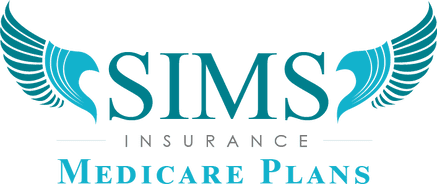Medicare Part B medical insurance helps pay for a wide range of healthcare services from doctor visits to durable medical equipment. But unlike Part A coverage, most people do have to pay a monthly premium for Part B coverage. What is the Medicare Part B premium cost and when do you have to pay it?
Medicare Part B premium rules can be confusing. Some people qualify for premium-free Part B while others pay a Part B penalty if they don’t enroll on time. Let’s break down what you need to know about Medicare Part B premiums.
What Does Medicare Part B Cover?
With Medicare Part B helps pay for:
- Doctor visits including annual wellness exams
- Outpatient care and preventive services
- Durable medical equipment like wheelchairs and walkers
- Ambulance transportation
- Mental health services
- Lab tests, X-rays, MRIs
- Physical and speech therapy
- Some home health and ambulance services
- Many cancer treatments and dialysis
- Certain drugs that Part A doesn’t cover
This Medicare coverage is crucial to managing health conditions and getting preventive care to stay well. That’s why most people choose to pay the premium to enroll in Part B.
Do You Have to Pay for Part B?
Most Medicare beneficiaries do have to pay a monthly premium for Part B coverage. However, you may qualify for premium-free Part B if:
- You or your spouse worked and paid Medicare taxes for 30-39 quarters. The standard Part B premium is $164.90 in 2022.
- You or your spouse worked and paid taxes for 40 quarters (10 years). Part B is premium-free.
- You have End-Stage Renal Disease (ESRD). Part B premiums are waived for patients who require dialysis or kidney transplants.
- You enroll in a Medicare Savings Program. These state programs pay Part B premiums for low-income seniors.
If none of these exceptions apply, you will need to pay a monthly premium for Medicare Part B.
How Much Is the Medicare Part B Premium?
The standard Medicare Part B premium amount is $170.10 per month in 2023. This is an increase from $164.90 per month in 2022.
However, most people don’t actually pay the standard rate. Your Part B premium is based on your income as reported on your latest tax return.
Higher-income enrollees pay higher premiums:
- Individuals making $97,000 or less and couples making $194,000 or less pay the standard premium.
- Premiums are higher for those with incomes above these amounts on a sliding scale.
- The highest income bracket pays over $500 per month for Part B in 2023.
So your final Medicare Part B cost depends on your total income, not your healthcare usage.
When Will I Start Paying the Part B Monthly Premium?
You’ll begin paying your Part B premium the month after you enroll in Part B coverage. This means there is about a 1month lag between signing up and owing your first payment.
For example, if you enroll in March during your Initial Enrollment Period, your Part B coverage starts April 1 but your first premium isn’t deducted until May.
In most cases, the Part B premium is automatically deducted from your Social Security benefits. If your Social Security check isn’t enough to cover the premium, Medicare bills you directly on a quarterly basis.
Make sure to budget for this new ongoing cost when you first enroll in Medicare Part B to avoid any payment issues.
Can I Get Help Paying Part B Premiums?
If you have limited income and resources, assistance programs can help pay for Medicare Part B:
- Medicaid covers Part B premiums and other Medicare costs if eligible in your state.
- Medicare Savings Programs help pay all or part of your Part B premiums if you meet income and asset limits.
- Employer insurance may cover Part B premiums through a retiree group health plan.
- State pharmaceutical assistance programs can subsidize Part B costs for eligible seniors.
To get financial help, you’ll need to apply through your state Medicaid office or Social Security. Make sure to ask about Part B premium assistance programs when you enroll.
What Happens If I Don’t Sign Up for Part B When First Eligible?
If you don’t enroll in Part B when initially eligible, you may have to pay a late enrollment penalty if you sign up later. This penalty is 10% of the standard premium for every 12-month period that you delayed enrolling.
For example, if you wait 3 years to get Part B, your penalty is 30% higher premiums for life. The late penalty is in addition to your standard monthly premium.
There are exceptions where you can enroll late without penalty, like losing employer coverage. But in most cases, it really pays to get Part B when you are first eligible to avoid permanent premium increases.
Can I Get Part B Without Paying Monthly Medicare Premiums?
The only way to have premium-free Part B is if you or your spouse paid Medicare taxes for at least 40 quarters (10 years) while working. You also won’t owe premiums if you qualify for Medicaid or a Medicare Savings Program.
Otherwise, you’ll pay monthly premiums for Part B coverage based on your income. Part B is still usually a good value compared to private insurance costs. And you can get help through assistance programs if eligible.
Key Takeaways
- Most Medicare beneficiaries pay a monthly premium for Part B coverage.
- Premiums are based on your income as reported on your latest tax return.
- Higher-income enrollees pay up to $500+ per month for Part B.
- Late enrollment results in a 10% penalty for each 12-month period you delay.
- Financial assistance is available to help cover premiums for those with limited income and resources.
- Weigh the costs vs. benefits when deciding whether to enroll in Medicare Part B.
Understanding the rules for Medicare Part B premiums can help you make an informed decision about getting this coverage. Paying the monthly premium provides valuable protection against unpredictable medical costs in retirement.
We’re Here to Help
You do not have to spend hours reading articles on the internet to get answers to your Medicare questions. Give Scott Sims at Sims Insurance Medicare Plans a Call at (541) 915-0939. You will get the answers you seek in a matter of minutes, with no pressure and no sales pitch. We are truly here to help.
FAQs
Do You Have to Pay Monthly Premiums for Medicare Part B Coverage in 2023?
Yes, you are required to pay monthly premiums for Medicare Part B coverage in 2023. The monthly premium amount can vary based on your income level. Some individuals may also qualify for assistance programs that can help cover the cost of the premiums.
What is Medicare Part B?
Medicare Part B is a component of Original Medicare that covers medical services and supplies that are necessary to diagnose and treat medical conditions. This can include doctor visits, outpatient care, preventive services, and medical equipment.
How much does Medicare Part B cost?
The cost of getting Medicare Part B can vary depending on your income level. In 2023, the standard premium amount for most individuals is $170.10 per month. However, if your income is above a certain threshold, you may be subject to an income-related monthly adjustment amount (IRMAA) that increases your premium.
Can I have Medicare Part B if I have a Medicare Advantage Plan?
No, you cannot have both Medicare Part B and a Medicare Advantage Plan. Medicare Advantage Plans provide an alternative way to receive your Medicare benefits, including Part A and Part B coverage, through private insurance companies.
Can I have Medicare Part B if I have a Medicare Supplement insurance?
Yes, you can have Medicare Part B if you have a Medicare Supplement insurance, also known as Medigap. Medicare Supplement insurance helps cover the costs that Original Medicare doesn’t, such as deductibles, coinsurance, and copayments.
How do I sign up for Medicare Part B?
If you are turning 65 or becoming eligible for Medicare due to disability, you will be automatically enrolled in Medicare Part B. However, if you are not automatically enrolled, you will need to sign up during the initial enrollment period, which is typically a seven-month period that begins three months before the month you turn 65.
What are the deductibles for Medicare Part B?
In 2023, the Medicare Part B deductible is $233 per year. This amount must be paid before Medicare begins to cover your medical services and supplies.
What are the other costs associated with Medicare Part B?
In addition to the monthly premiums and annual deductible, you may also be responsible for coinsurance and copayments for certain medical services and supplies. The exact costs will depend on the specific services you receive.
Are there income limits for Medicare Part B?
There are no income limits for Medicare Part B eligibility. However, individuals with higher incomes may be subject to an income-related monthly adjustment amount (IRMAA) that increases their monthly premiums.
Can I change my Medicare Part B coverage during the year?
Yes, you can make changes to your Medicare Part B coverage during certain enrollment periods. The most common opportunity to make changes is during the annual enrollment period, which occurs from October 15 to December 7 each year.


